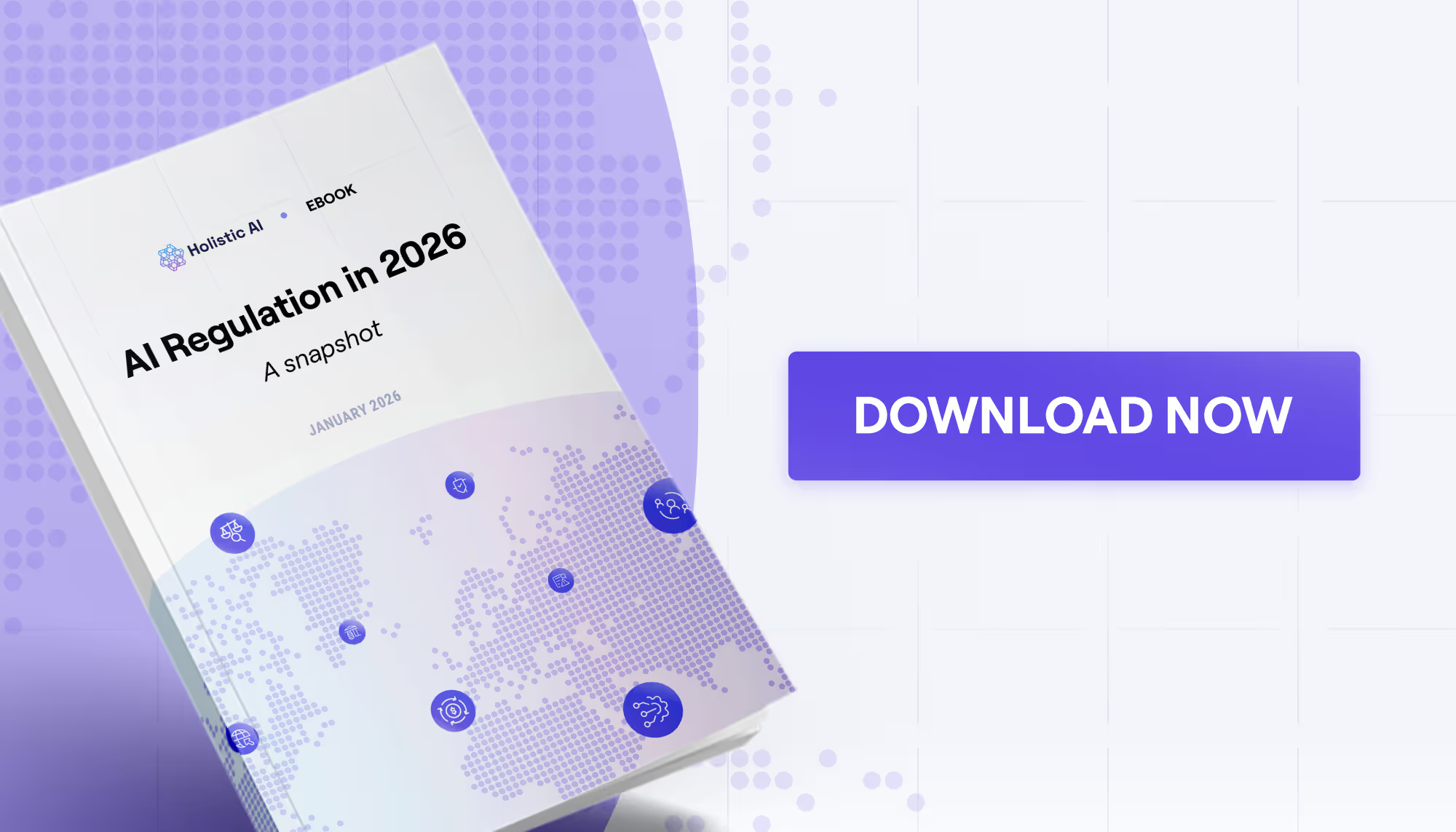With the rapid adoption of AI across business functions, AI governance is critical to managing AI transformation, mitigating risks, and ensuring maximization in deriving value. In this blog, we define AI governance and show how it serves as the backbone of AI adoption. From promoting compliance readiness to fostering trust and transparency, effective AI governance isn't merely a desirable feature—it’s a non-negotiable necessity for organizations aiming to scale AI confidently.
AI Governance refers to the framework and tools used to ensure the effective management, monitoring, lawfulness, security and safety of AI across the enterprise.
Without appropriate governance techniques, organizations run the risk of legal, financial, and reputational damage due to misuse, AI-related incidents, and biased outcomes from their algorithmic inventory. AI oversight is, therefore, necessary to mitigate these threats and—more broadly—promote confidence in AI systems through accountability mechanisms, transparency, explainability, and compliance strategies.
AI governance consists of several interconnected layers, ranging from organizational structure to regulatory alignment. It involves establishing mechanisms such as standardization in AI governance and regulatory frameworks to steer the development and deployment of AI technologies. Clearly defined principles, procedures, and metrics are crucial to transparent and well-governed AI.
A robust governance structure—covering everything from AI adoption and development to risk management frameworks—provides organizations with a platform to ensure that their AI use aligns with their strategy, ethical guidelines, and regulatory requirements.
Organizations, as the entities creating and using AI systems, play a crucial role in defining and implementing AI governance. Sound governance practices fall under the umbrella of responsible AI, which includes compliance strategies, data minimization, and information security policies.
Responsible AI involves developing and using AI in a way that respects rights, promotes fairness, and encourages transparency. It ensures AI is used for the benefit of all, without causing harm or perpetuating biases. Additionally, having oversight and a comprehensive understanding of AI inventory helps organizations monitor and update operational practices in line with evolving risks, legal compliance, and data privacy policies.

Measuring the effectiveness is crucial. Key metrics include:
To implement AI governance effectively, organizations should:

A well-structured approach to managing AI systems provides numerous advantages, including:
AI governance is a collective responsibility. From the executive team defining the AI strategy, the developers building the AI models, to the users interacting with the AI systems, everyone has a responsibility to ensure the ethical and responsible use of AI. Employees need to understand how AI works, be aware of governance issues, and actively participate in governance practices to contribute to a responsible AI environment.
Holistic AI is an AI Governance platform that empowers enterprises to adopt and scale AI confidently. The platform helps:
Our methodology provides organizations with greater transparency, oversight, and risk mitigation capabilities for their AI systems. This enables them to proactively identify issues, take corrective actions, and ensure their systems are developed and deployed ethically and responsibly.
Schedule a call to find out how we can help you harness the power of AI governance.



Get a demo
Get a demo